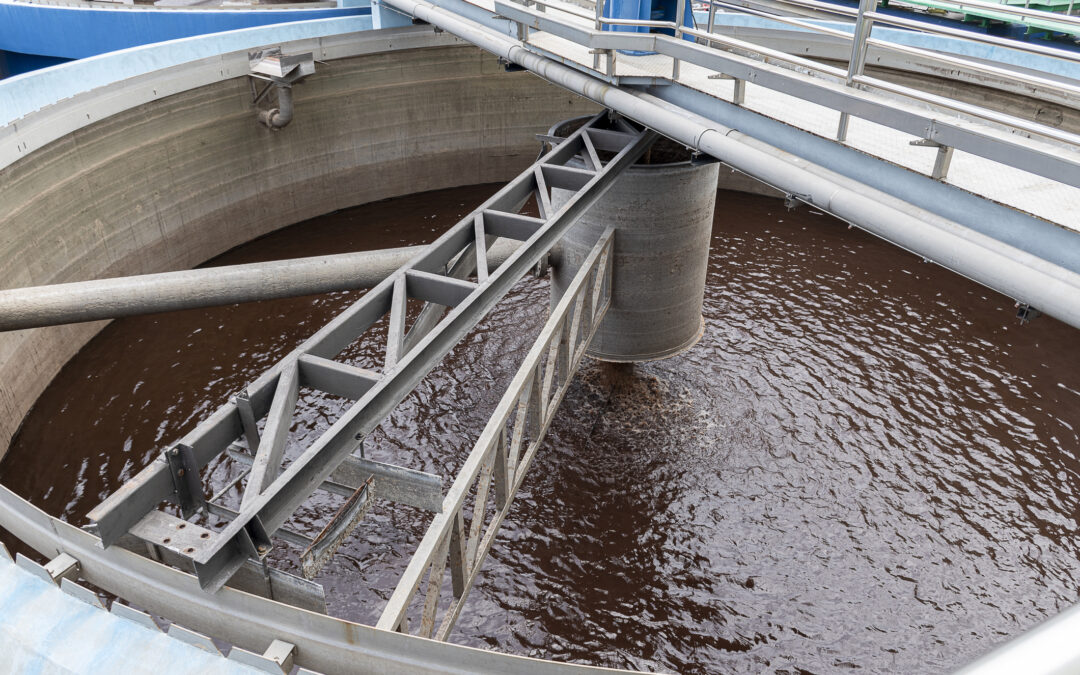Over the years, more effective wastewater treatment methods have significantly reduced sludge cake volume. Today, the average volume of sludge is just 1% of influent wastewater treated, which drops to 0.5% with dewatered sludge. However, even with these relatively small volumes, sludge cake management can still lead to a massive drag on a wastewater treatment plant’s bottom line.
Between 40-60% of plant costs can be attributed to the handling of sludge. Current environmental regulations are more stringent than ever and can be expected to become even more so as population growth and urbanization continue to increase the strain on wastewater treatment systems. Both transportation and chemical costs are climbing, and options for disposal are becoming more limited. Sludge cake management expenses, therefore, need to be streamlined for plants to remain cost-effective.
Thankfully, new technologies provide solutions to help plant managers operate more efficiently. Advanced Artificial Intelligence (AI) tools are becoming the gold standard for monitoring metrics and increasing the efficiency of the sludge dewatering process, leading to reduced costs and improved regulatory compliance.
Sludge Cake: The Weight of the Issue
In the early 20th century, there was a worldwide drive to clean wastewater discharge before releasing it into the environment. Since then, increasingly stringent regulations have forced wastewater treatment plants to provide more levels of treatment and find new ways to use and dispose of sludge safely.
At the same time, the cost of sludge disposal, transportation, and chemicals (like polymers) have increased. Dewatered sludge cake, for example, can consist of anywhere between 18-35% dry solids, and this variability creates an opportunity for improvement for plant operators.
Check out this white paper to learn more about the cost of wastewater treatment inefficiencies.
There’s also the issue of ongoing variability in sludge densities, impacting operational costs due to the increased frequency of equipment shutdowns and startups. In addition, labor costs are also negatively impacted as man-hours needed to address these situations are increased.
With these pressures, plant managers must identify new solutions that supplement current practices and enhance operational efficiency. With the help of technology, we can consistently reduce the amount of water in sludge cake while optimizing polymer dosage and improving equipment availability.
Embracing AI for a More Efficient Sludge Cake
While wastewater treatment and management has evolved, there is still an opportunity for significant process improvement. According to one study, 58% of wastewater is improperly managed. Current wastewater treatment techniques, natural variation, and inefficiency mean that wastewater treatment plants need help to increase this percentage.
AI is one advanced technology already implemented in many plants for water quality monitoring, equipment energy optimization, and operation simulation. For example, wastewater pumping stations that have deployed AI have seen a 16.7% reduction in electricity consumption. AI can also be effective in monitoring and optimizing the sludge dewatering process.
When integrated with intelligent sensors and meters, AI can proactively predict end-of-process moisture levels and recommend the precise polymer dosage required to meet targeted sludge dryness specifications. And, since this can be executed autonomously, it frees up man hours for other operational priorities.
Using AI in the Sludge Dewatering Process
Clear operational challenges remain within the sludge dewatering process. Although solutions like thermal hydrolysis and enzymic hydrolysis have been effective at breaking down sludge and making it easy to dispose of, these labor-intensive techniques add significantly to bottom line costs.
Despite some modernization, monitoring, and testing are still largely manual operations and prone to human error, leading to under and over-dosing of polymer based on visual analysis of effluent quality. Failing to perfect processes like these can cost hundreds of thousands of dollars for wastewater treatment plants annually, with treatment costing anywhere between $2-18/kgal and escalating annually.
As previously mentioned, AI-assisted processes can monitor plant conditions 24/7, accurately predict inefficiencies in real time, and recommend and even execute corrective action autonomously. This allows for more accurate and reduced polymer dosing and drier sludge cake, directly contributing to reduced sludge transportation or incineration costs.
It has been estimated that even a 1% decrease in sludge cake water content can represent a savings of up to $100,000 annually. In addition, with advanced technology, monitoring becomes an around-the-clock process, and dosage is based on detailed analysis of historical data and output specifications. This ultimately reduces process control variability, improving equipment uptime, and mean time between failures.
Making the Change to Modern Sludge Dewatering Processes
Adopting emerging technologies designed to improve plant operating efficiency is becoming necessary. Keeping pace with the increasing demand for clean water, sustainable solutions, and the desire to streamline costs requires continuing the evolution of the wastewater treatment process. The adoption of technologies like AI, when coupled with traditional best practices, represents a pragmatic modernization step toward ever-increasing efficiency.
Today, integrated turnkey solutions are available that can be fully operational in a couple of months, work seamlessly with existing IT and OT infrastructure, require no special technical staffing, and can be implemented without disrupting day-to-day operations. Through the development of a comprehensive strategy, an approach that includes technological adoption and commitment to continuous improvement can unlock the potential for improved efficiency, quality, and innovation.
To learn more about the future of wastewater treatment and some of the technologies that are already changing the wastewater landscape, read our blog: “AI-Driven Process and Quality Optimization in Modern Wastewater Treatment Facilities.”

